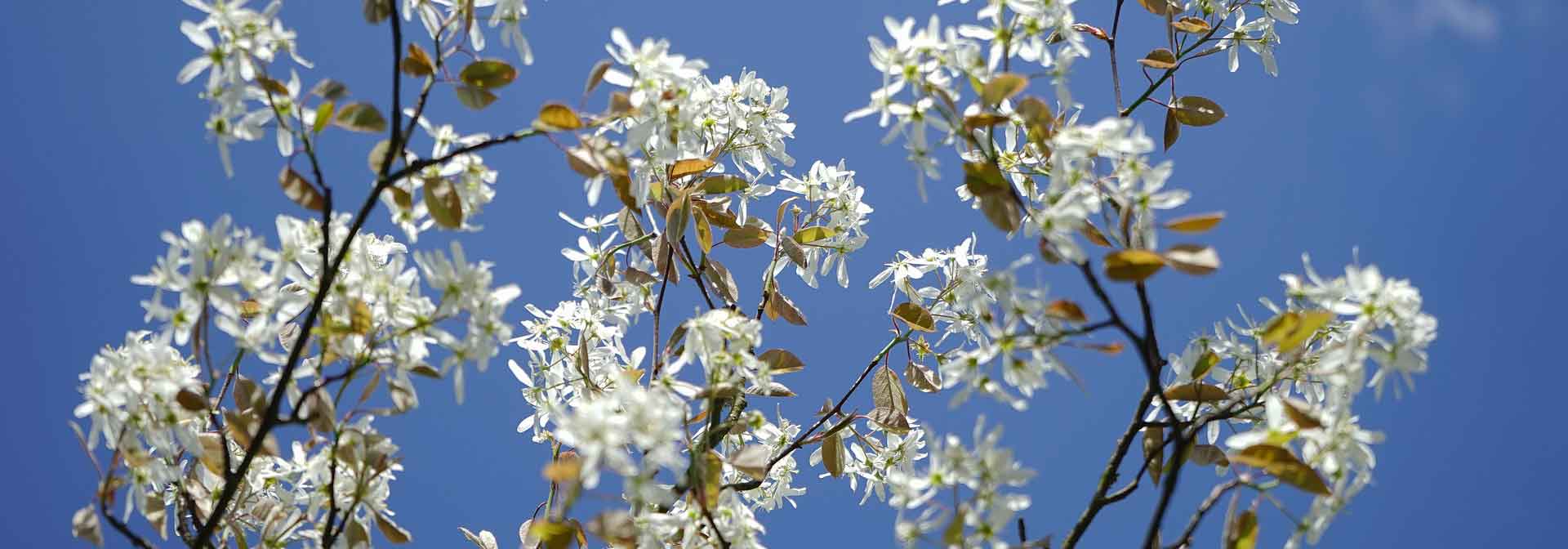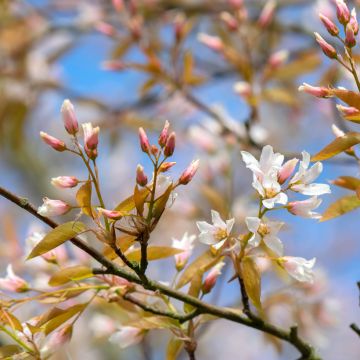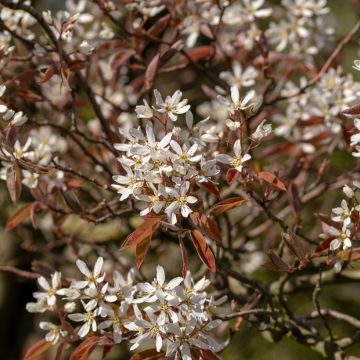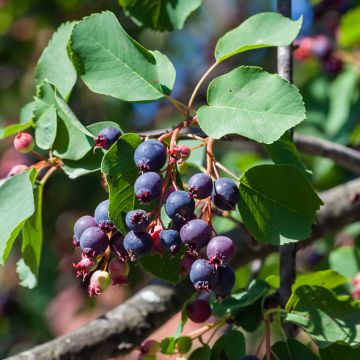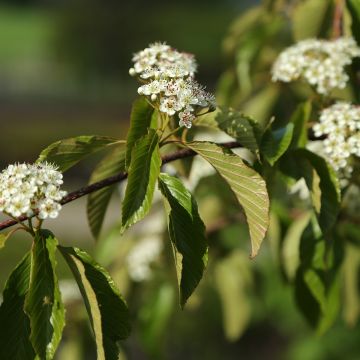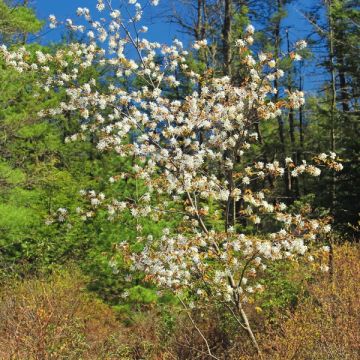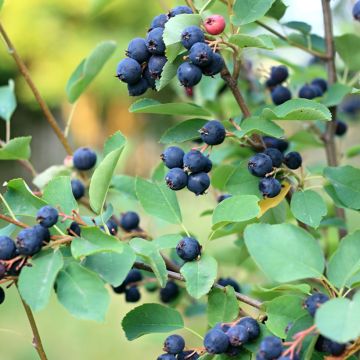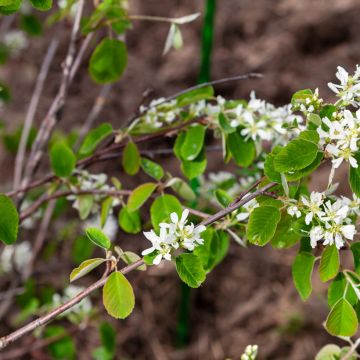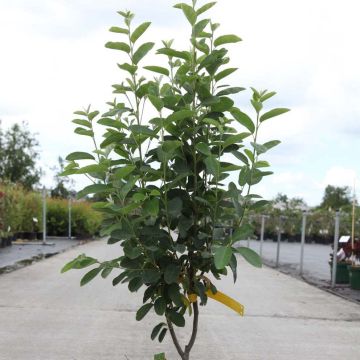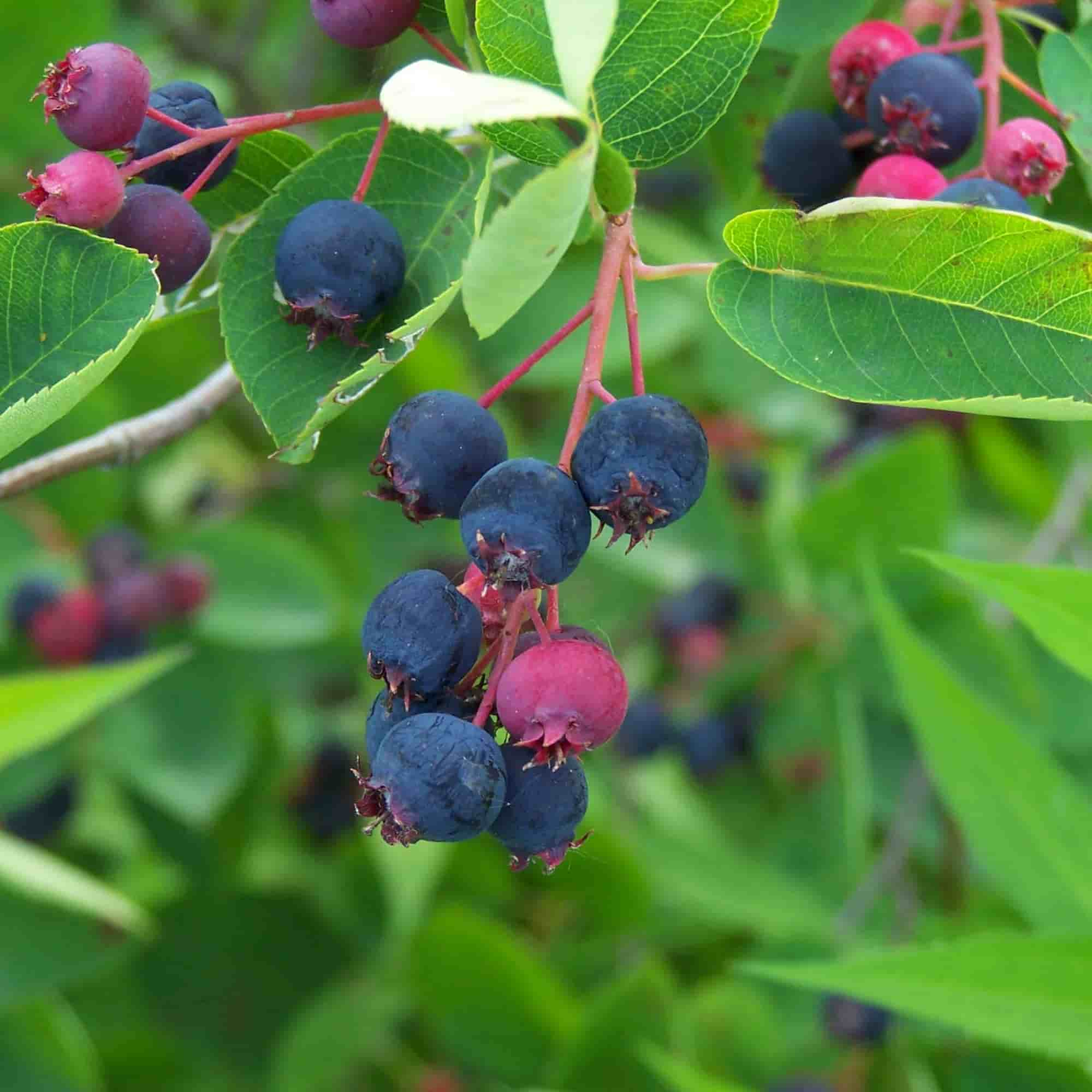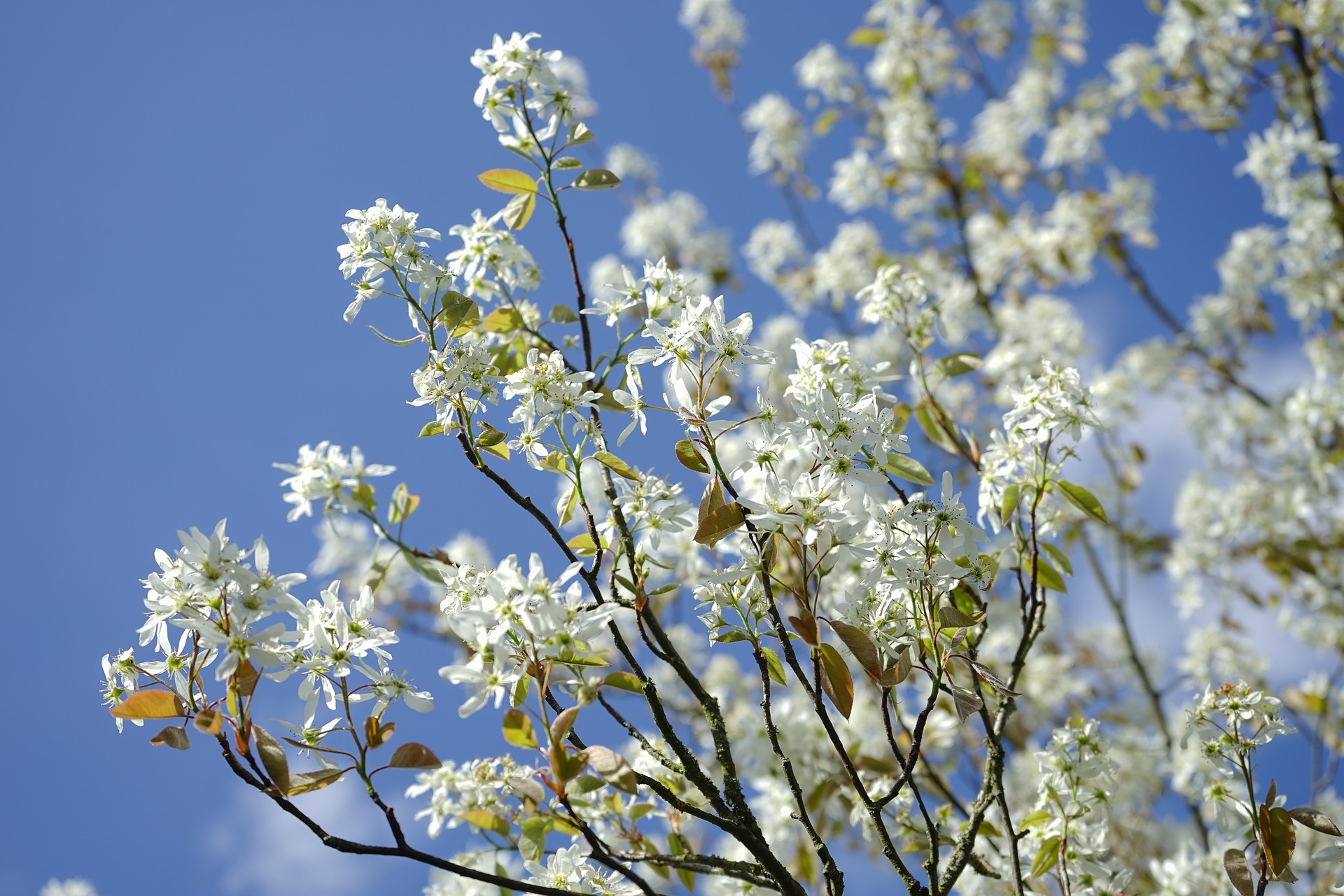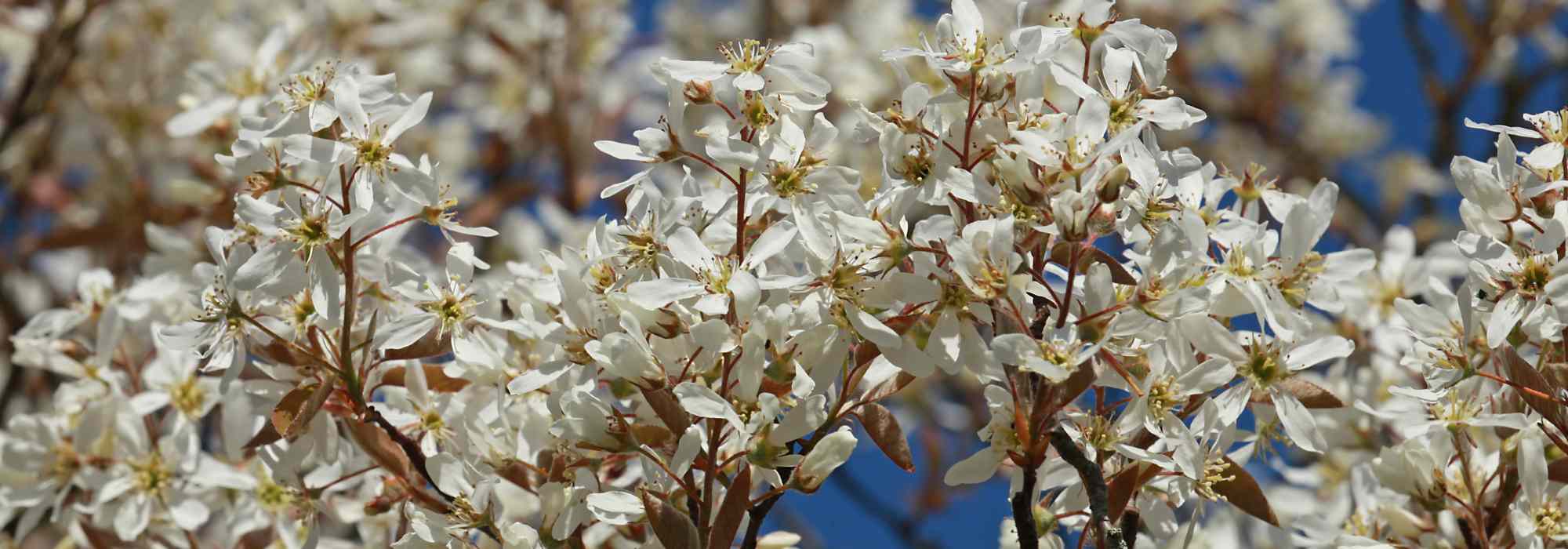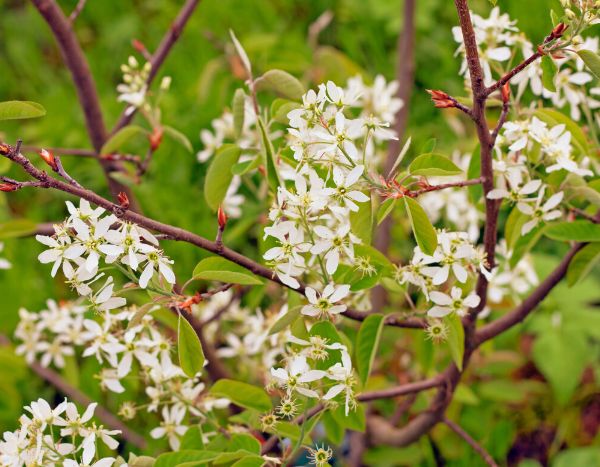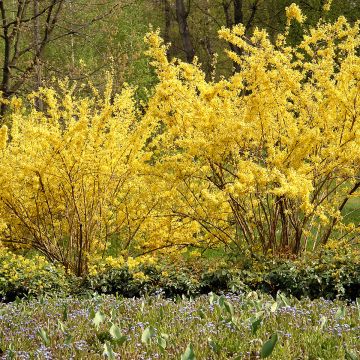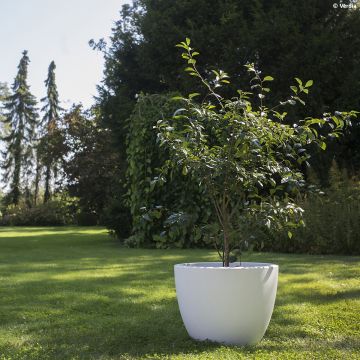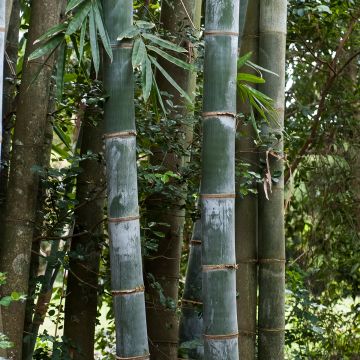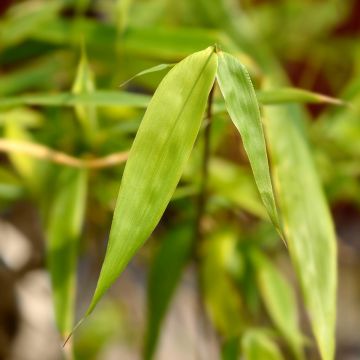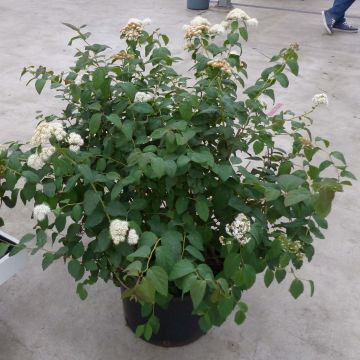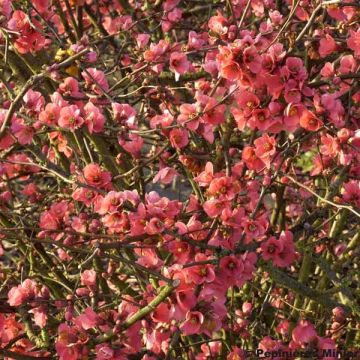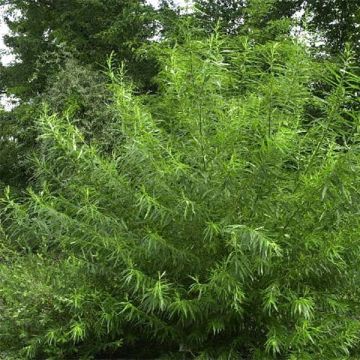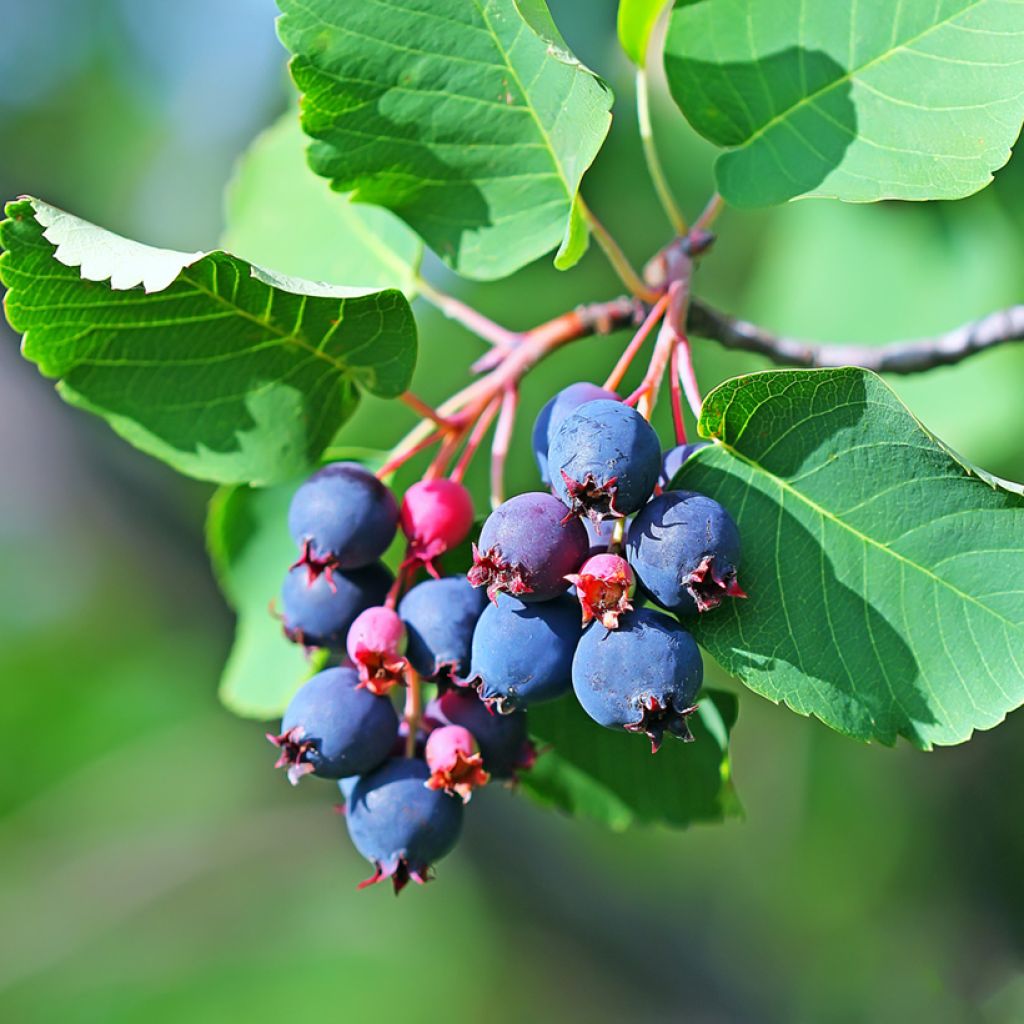

Amelanchier alnifolia Greatberry Garden ou Northline
Amelanchier alnifolia Greatberry Garden
Amelanchier alnifolia Greatberry® Garden 'KOJUAAGG'
Western Serviceberry, Saskatoon, Pacific Serviceberry, Alder-leaf Shadbush, Dwarf Shadbush, Chuckley Pear
Special offer!
Receive a €20 voucher for any order over €90 (excluding delivery costs, credit notes, and plastic-free options)!
1- Add your favorite plants to your cart.
2- Once you have reached €90, confirm your order (you can even choose the delivery date!).
3- As soon as your order is shipped, you will receive an email containing your voucher code, valid for 3 months (90 days).
Your voucher is unique and can only be used once, for any order with a minimum value of €20, excluding delivery costs.
Can be combined with other current offers, non-divisible and non-refundable.
Home or relay delivery (depending on size and destination)
Schedule delivery date,
and select date in basket
This plant carries a 6 months recovery warranty
More information
We guarantee the quality of our plants for a full growing cycle, and will replace at our expense any plant that fails to recover under normal climatic and planting conditions.
Description
Amelanchier alnifolia Greatberry Garden or Northline is a beautiful fruit bush that is characterised by very abundant production from the first years, early on, with fruits ripening quite closely together, which facilitates the picking and processing of fruits over a short period of time. It produces firm fruits (amelanches), of a large size, measuring 13 to 16 mm (0.5 - 0.6 in) in diameter, weighing around 20 g, with a globular shape, grouped in clusters of 7 to 13 berries. The black-blue skin is covered with a lighter-colored waxy film (pruina), resembling blackcurrant or aronia. The berries contain a juicy flesh with a sweet and sugary flavor, reminiscent of blueberries with a slight acidity, hiding 5 to 10 brown seeds with a hint of bitter almond fragrance. It is a fruit of great nutritional value.
Amelanchier alnifolia, sometimes commonly called Saskatoon berry, Alder-leaved Serviceberry or Tree Blueberry, belongs to the Rosaceae family, like Apple Trees, Cherry Trees, Pear Trees, etc. Native to North America, Amelanchier alnifolia is found in western Canada, western and central United States, and Alaska. It can be found in various environments, from riverbanks to less favourable rocky slopes exposed to wind, up to an altitude of 2000 m (6500 ft). It prefers slightly acidic and moist soil and can adapt to relatively dry and hot summers once established. The Amelanchier berry is sometimes called: amelanche, Saskatoon, juneberry or petite poire in Quebec. The name 'Saskatoon', an anglicization of a word belonging to the Cree language, can be translated as "the fruit of the tree with many branches". This fruit gave its name to the Canadian city of Saskatoon, on the banks of the Saskatchewan River.
The Greatberry Garden or Northline variety is a selection obtained in the 1970s by John Wallace (Beaverlodge Nursery) in Beaverlodge, Alberta, Canada, and introduced into cultivation in 1960. It forms a bushy and ramified shrub with a rounded shape, reaching approximately 3 m (10 ft) in height and 2 m (6-7 ft) in width at maturity. Its growth is slow in the first years, allowing it to establish well. Its bark is grey to brown, sometimes tinged with red. Smooth when young, it becomes rougher over time. Its deciduous foliage consists of oval to obovate, alternate, dentate leaves, resembling those of the Alder. Coppery in spring, the leaves then turn dark green on the upper side and grey-green on the lower side, ending with shades of orange-red in autumn. The young spring leaves are slightly fuzzy, they then become tougher, measuring 3 to 5 cm (2 in) in length and 2 to 4 cm (1.6 in) in width, with prominent veins. Very hardy, the shrub withstands severe winters with temperatures dropping to -30 °C.
The flowering, remarkably decorative, is very abundant in April-May, taking place at the tips of young branches that can be bare or already adorned with young leaves, depending on the climate. Flowering and fruiting occur rapidly in this Amelanchier, around the age of 3-4 years. The white flowers, with 5 petals and yellow stamens, measuring 2 cm (0.8 in) in diameter, are gathered in clusters along the branches. The bisexual flowers possess both female (pistils) and male (stamens with anthers) reproductive organs, which are self-pollinating, making this shrub completely self-fertile. Nectar-rich and attractive to pollinators (bees, bumblebees, butterflies, hoverflies, etc.) and birds. A single plant can produce 4 to 5 kg and up to 8 kg of fruits annually depending on the growing conditions and soil fertility. Planting multiple plants will optimise fruit production.
The fruits ripen between late June and early August, and the harvest spans over about twenty days as the berries ripen. The harvest is done by hand or with a blueberry comb when they easily detach from their peduncle. Like apple, pear, quince, etc., the Amelanchier is a complex fruit, called a pome (syn. perydium), consisting of a floral receptacle that becomes fleshy and fused to the ovary. They can be consumed right after harvesting. However, one will need to compete with birds (especially blackbirds) or use a net. Their fresh storage life is relatively short, about 2 to 3 days in the bottom of the refrigerator, but they can be frozen, dried, or preserved for later use. Juicy, sweet, and aromatic, Amelanchier berries can be consumed fresh or cooked. They are a low-calorie fruit, rich in antioxidants and fibre, and well-endowed with minerals (manganese, magnesium, iron, calcium, and potassium), beta-carotene, and vitamins. Rich in pectin, they are ideal for making jams or jellies. In cooking, they can be used in pastries (muffins, clafoutis, tarts, cheesecakes, cookies, etc.), compotes, syrups, sauces, or ice creams. They are also appreciated for making wine or liqueur or for flavoring vinegar.
Amelanchier alnifolia is easy to cultivate and undemanding. It prefers a sunny or partially shaded site. In summer it provides the satisfaction of beautiful harvests and the pleasure of tasting delicious fruits that can be used in various culinary preparations. To create a fruitful hedge, it can be planted alongside other fruiting Amelanchier varieties, Sea Buckthorns (Hippophae rhamnoides), Aronia, Currants, Raspberries, Goji (Lycium barbarum), Baie de mai (Lonicera kamtschatica), Goumi (Elaeagnus multiflora et umbellata), Redcurrants (Ribes rubrum), Blackberries (Rubus fruticosus), Blueberries (Vaccinium corymbosum), Elderberry (Sambucus nigra). This charming shrub can easily be incorporated into country-style hedges or colourful and lively flower beds, alongside Ornamental Apple and Cherry Trees, Flowering Quince, Forsythia, Deciduous Euonymus, Guelder Rose, Portuguese Laurel, Osmanthus, Spirea, Winter Honeysuckle (Lonicera fragantissima), Snowberry, etc. Its preference for neutral to acidic soil allows it to accompany acid-loving plants such as Camellias, Azaleas, and Rhododendrons. It can also be used in the background of borders with lower-growing perennials or shrubs.
Plant habit
Fruit
Flowering
Foliage
Botanical data
Amelanchier
alnifolia
Greatberry® Garden 'KOJUAAGG'
Rosaceae
Western Serviceberry, Saskatoon, Pacific Serviceberry, Alder-leaf Shadbush, Dwarf Shadbush, Chuckley Pear
Amelanchier Northline
Cultivar or hybrid
Other Saskatoon - Juneberry
View all →Planting and care
The Amelanchier alnifolia Greatberry Garden or Northline bush is planted in well-drained garden soil, preferably non-calcareous, moist or slightly humid, deep, in sun or partial shade. Planting can be done in spring, from February to April or preferably in autumn from September to November, to promote root growth before winter and enjoy flowering from the first year. In any case, it is necessary to avoid periods of frost or high heat.
This bush, which does not like too arid situations, can however withstand moderate summer drought once well established. On the other hand, it should be protected from drying winds that could burn its foliage and damage its flowers. Space the plants 1.5 to 3 m (5 to 10 ft) apart in informal hedges, and 3 to 4 m (10 to 13 ft) apart in all directions when planted in isolation.
Prepare the soil by removing stones and unwanted weeds. Dig a planting hole, two or three times the size of the root ball or root volume. Make sure to separate the subsoil and topsoil. Mix crushed horn or well-rotted compost or potting soil with the subsoil and pour this mixture into the bottom of the planting hole. For potted plants, remove the root ball and gently loosen the roots to stimulate them. For bare-root plants, soak the roots in a pralinage solution to prevent air pockets from forming between the roots and the soil. You can either prepare the pralinage by mixing 1/3 very fine or potting soil, 1/3 cow manure or compost, and 1/3 rainwater, or buy it commercially. Place your subject in the centre of the hole, making sure to position the collar at ground level, cover with topsoil and tamp down well. Water generously (about 10 L). Water regularly In the summer to help it establish, especially the first two dry summers. Mulch the soil to maintain some freshness - always after watering your Amelanchier abundantly so that its roots do not develop only at the surface of the soil, which would make it more susceptible to water shortage.
Every spring, apply well-decomposed compost to the base of your bush to support fruit production.
Amelanchier is not very susceptible to most diseases or attacks from insects or parasites. If the weather is mild and humid, the bush may be subject to powdery mildew (white powdery coating on the leaves): spray a fungicide based on sulphur or nettle manure or a horsetail infusion. Like all bushes in the rose family, Amelanchier can be susceptible to fire blight.
Planting period
Intended location
Care
Planting & care advice
This item has not been reviewed yet - be the first to leave a review about it.
Similar products
Haven't found what you were looking for?
Hardiness is the lowest winter temperature a plant can endure without suffering serious damage or even dying. However, hardiness is affected by location (a sheltered area, such as a patio), protection (winter cover) and soil type (hardiness is improved by well-drained soil).

Photo Sharing Terms & Conditions
In order to encourage gardeners to interact and share their experiences, Promesse de fleurs offers various media enabling content to be uploaded onto its Site - in particular via the ‘Photo sharing’ module.
The User agrees to refrain from:
- Posting any content that is illegal, prejudicial, insulting, racist, inciteful to hatred, revisionist, contrary to public decency, that infringes on privacy or on the privacy rights of third parties, in particular the publicity rights of persons and goods, intellectual property rights, or the right to privacy.
- Submitting content on behalf of a third party;
- Impersonate the identity of a third party and/or publish any personal information about a third party;
In general, the User undertakes to refrain from any unethical behaviour.
All Content (in particular text, comments, files, images, photos, videos, creative works, etc.), which may be subject to property or intellectual property rights, image or other private rights, shall remain the property of the User, subject to the limited rights granted by the terms of the licence granted by Promesse de fleurs as stated below. Users are at liberty to publish or not to publish such Content on the Site, notably via the ‘Photo Sharing’ facility, and accept that this Content shall be made public and freely accessible, notably on the Internet.
Users further acknowledge, undertake to have ,and guarantee that they hold all necessary rights and permissions to publish such material on the Site, in particular with regard to the legislation in force pertaining to any privacy, property, intellectual property, image, or contractual rights, or rights of any other nature. By publishing such Content on the Site, Users acknowledge accepting full liability as publishers of the Content within the meaning of the law, and grant Promesse de fleurs, free of charge, an inclusive, worldwide licence for the said Content for the entire duration of its publication, including all reproduction, representation, up/downloading, displaying, performing, transmission, and storage rights.
Users also grant permission for their name to be linked to the Content and accept that this link may not always be made available.
By engaging in posting material, Users consent to their Content becoming automatically accessible on the Internet, in particular on other sites and/or blogs and/or web pages of the Promesse de fleurs site, including in particular social pages and the Promesse de fleurs catalogue.
Users may secure the removal of entrusted content free of charge by issuing a simple request via our contact form.
The flowering period indicated on our website applies to countries and regions located in USDA zone 8 (France, the United Kingdom, Ireland, the Netherlands, etc.)
It will vary according to where you live:
- In zones 9 to 10 (Italy, Spain, Greece, etc.), flowering will occur about 2 to 4 weeks earlier.
- In zones 6 to 7 (Germany, Poland, Slovenia, and lower mountainous regions), flowering will be delayed by 2 to 3 weeks.
- In zone 5 (Central Europe, Scandinavia), blooming will be delayed by 3 to 5 weeks.
In temperate climates, pruning of spring-flowering shrubs (forsythia, spireas, etc.) should be done just after flowering.
Pruning of summer-flowering shrubs (Indian Lilac, Perovskia, etc.) can be done in winter or spring.
In cold regions as well as with frost-sensitive plants, avoid pruning too early when severe frosts may still occur.
The planting period indicated on our website applies to countries and regions located in USDA zone 8 (France, United Kingdom, Ireland, Netherlands).
It will vary according to where you live:
- In Mediterranean zones (Marseille, Madrid, Milan, etc.), autumn and winter are the best planting periods.
- In continental zones (Strasbourg, Munich, Vienna, etc.), delay planting by 2 to 3 weeks in spring and bring it forward by 2 to 4 weeks in autumn.
- In mountainous regions (the Alps, Pyrenees, Carpathians, etc.), it is best to plant in late spring (May-June) or late summer (August-September).
The harvesting period indicated on our website applies to countries and regions in USDA zone 8 (France, England, Ireland, the Netherlands).
In colder areas (Scandinavia, Poland, Austria...) fruit and vegetable harvests are likely to be delayed by 3-4 weeks.
In warmer areas (Italy, Spain, Greece, etc.), harvesting will probably take place earlier, depending on weather conditions.
The sowing periods indicated on our website apply to countries and regions within USDA Zone 8 (France, UK, Ireland, Netherlands).
In colder areas (Scandinavia, Poland, Austria...), delay any outdoor sowing by 3-4 weeks, or sow under glass.
In warmer climes (Italy, Spain, Greece, etc.), bring outdoor sowing forward by a few weeks.






























